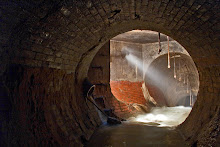The passage I will study starts p. 151 “The articles and illustrations he found…” to “if you want to get to town.” p.152
I have chosen this passage because it deals with what we know of History and because it is metatextual.
In this passage, Patrick tries to construct History, he wants to focus on an unofficial version of Hisotry: the story of the nun who fell out from the bridge. He is looking for “articles and illustrations” in order to re-create History.
The first documents he finds deal with objective, scientific facts: “detail[s] about the soil, the wood…” which are indeed events that one cannot contradict, but these details are not about human beings. Problems of telling History begin when it is about people’s stories. Patrick denies this version of History, these “Official histories and news stories” which are compared to “rhetoric”. This comparison highlights the fact that this is a superficial History.
The author of the article in the website http://www.lib.unb.ca/Texts/SCL/bin/get.cgi?directory=vol18_1/&filename=Beran.htm states that “Ondaatje's choosing historical events of local significance challenges the notion of history as a record of events of world significance and asserts the importance of marginalized events and the relatively unknown people involved in them. In an interview, Ondaatje says, "If there was a kind of direction in the book, it was making sure that something got said, to write about that unofficial thing that was happening" (Fagan 5)”.
And what Patrick is doing is exactly the same, he wants to know the “unofficial thing that was happening”.
I find this extract metatextual because it obviously deals with art, especially photography since it refers to Lewis Hine’s photographs. The narrator thinks they are closer to reality than the documents Patrick is looking at. He says: “His photographs are rooms one can step into – (…)”, photographs allow one to live things again. And photographs do not pretend to be objective, as the historical documents -and the Historians behind them- do. This opinion can also be applied to literature and especially historiographic fictions which do not pretend to be objective. They are then closer to reality.
The narrator also refers to Conrad’s letters, which shows that the extract deals with literature. It refers to letters that Alice read to Patrick, one of which said: “Moreover a sweeping assertion is always wrong, since men are infinitely varied” (p.141). The sentence can hint at the fact that History cannot claim to truth.
It is also more evidently metatextual when the narrator (or Patrick’s voice…the reader cannot know because it is in italics: voices are melted which gives the impression of “chaos”) states:
Only the best art can order the chaotic tumble of events. Only the best can realign chaos to suggest both the chaos and order it will become.
In my opinion, one can see in this quote a reference to History and Literature and this passage leads us to read it in this way. Indeed, History is a “chaotic tumble of events”, and the way History is usually presented, does not take account for the “chaos”, it wants to make it disappear, so that History appears as something linear and logical. But fiction is able to “suggest (…) the chaos” while it gives a sensation of “order”. I would say that this novel is a striking example of this quote. In the Skin of a Lion represents historical events, and it is ordered: the reader is able to follow the progress of the building of the Bloor Street Viaduct and of the Waterworks. But at the same time, the novel shows that History is a “chaos”, because the novel is not structurated linearly and because History is revisited through the voices of persons that had been forgotten by traditional History.
This quote can also refers to the narrator who can order things as well. It orders a book and in the case of In the Skin of a Lion, the narrator orders History.
I have found another interpretation of this sentence which very relevant:
in this website:
http://www.lib.unb.ca/Texts/SCL/bin/get.cgi?directory=vol18_1/&filename=Beran.htm
“For Ondaatje's novel, the ancient epic is the art that can order the chaotic tumble of events Ondaatje imagines into a new history of the twentieth-century in Canada. The opening of The Gilgamesh Epic directs the audience to look at the walls, rampart, and temple Gilgamesh built.”
Indeed, if the reader keeps in mind The Epic of Gilgamesh, the novel makes much more sense, because it is ordered according to this story. Ondaatje might have wanted to show that “anciant epic is the art that can order the chaotic tumble of events” because he also takes “Greek medicine” which was “brought (…) to the western world” as an example of the begining of an order. In this novel, the “Greek medicine” which allows to create order, is The Epic of Gilgamesh.
However, I have been puzzled by the fact that the narrator wants to find “order”. Moreover, the illustration of the sentence above, with the example of “the Bayeux Tapestry” is paradoxical.
The narrator illustrates the sentence with “the Bayeux Tapestry” which is a “long embroidered cloth which depicts the events leading up to the 1066 Norman invasion of England as well as the events of the invasion itself.” (www.wikipedia.org). However, the end of the cloth was lost, thus nobody can know the end of the story.
This example is paradoxical because the narrator states that there is an aim whose “town” is the metaphor, but in the Bayeux Tapestry, there is no end…
The narrator insists on the fact that there is an “order” but maybe there is no order. He also wants every reader to “trust” the narrator, and I do not believe this is the way one should read a novel.
That is why, I think the reader have to keep in mind that he is reading “art”, and that art is artificial: it orders where there might be no order.



